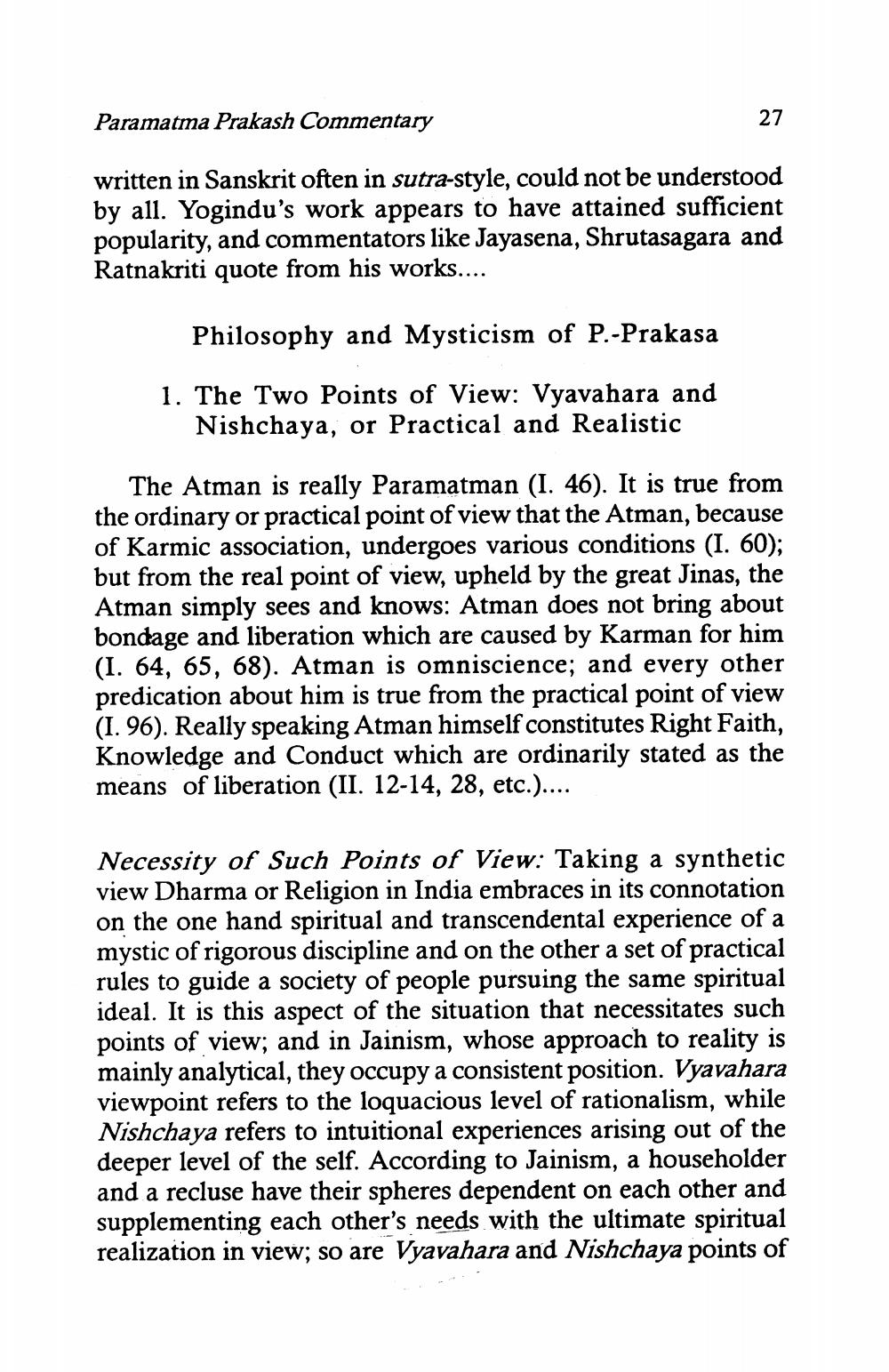________________
Paramatma Prakash Commentary
27
written in Sanskrit often in sutra-style, could not be understood by all. Yogindu's work appears to have attained sufficient popularity, and commentators like Jayasena, Shrutasagara and Ratnakriti quote from his works....
Philosophy and Mysticism of P.-Prakasa
1. The Two Points of View: Vyavahara and
Nishchaya, or Practical and Realistic
The Atman is really Paramatman (I. 46). It is true from the ordinary or practical point of view that the Atman, because of Karmic association, undergoes various conditions (I. 60); but from the real point of view, upheld by the great Jinas, the Atman simply sees and knows: Atman does not bring about bondage and liberation which are caused by Karman for him (I. 64, 65, 68). Atman is omniscience; and every other predication about him is true from the practical point of view (I. 96). Really speaking Atman himself constitutes Right Faith, Knowledge and Conduct which are ordinarily stated as the means of liberation (II. 12-14, 28, etc.)....
Necessity of Such Points of View: Taking a synthetic view Dharma or Religion in India embraces in its connotation on the one hand spiritual and transcendental experience of a mystic of rigorous discipline and on the other a set of practical rules to guide a society of people pursuing the same spiritual ideal. It is this aspect of the situation that necessitates such points of view; and in Jainism, whose approach to reality is mainly analytical, they occupy a consistent position. Vyavahara viewpoint refers to the loquacious level of rationalism, while Nishchaya refers to intuitional experiences arising out of the deeper level of the self. According to Jainism, a householder and a recluse have their spheres dependent on each other and supplementing each other's needs with the ultimate spiritual realization in view; so are Vyavahara and Nishchaya points of




